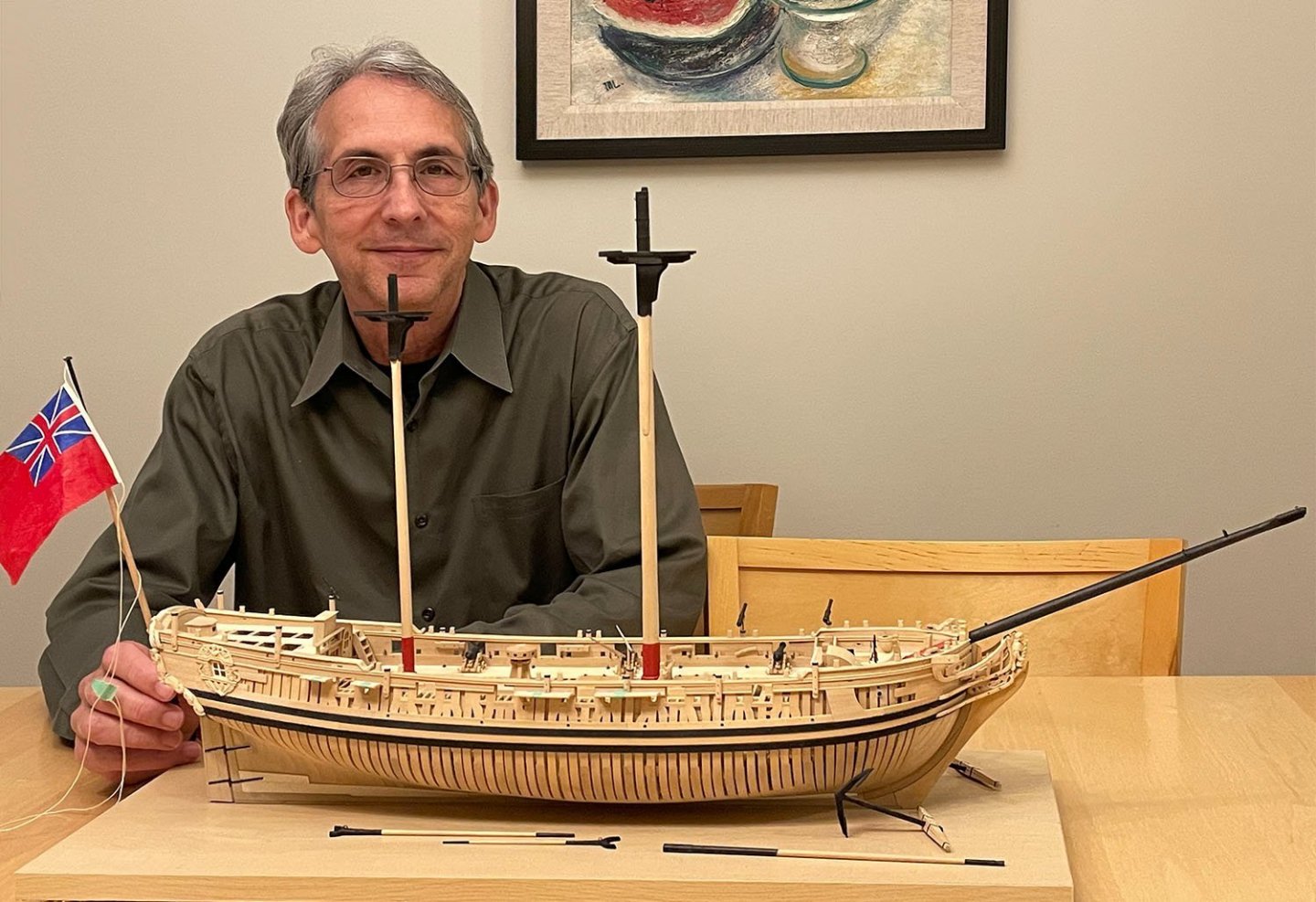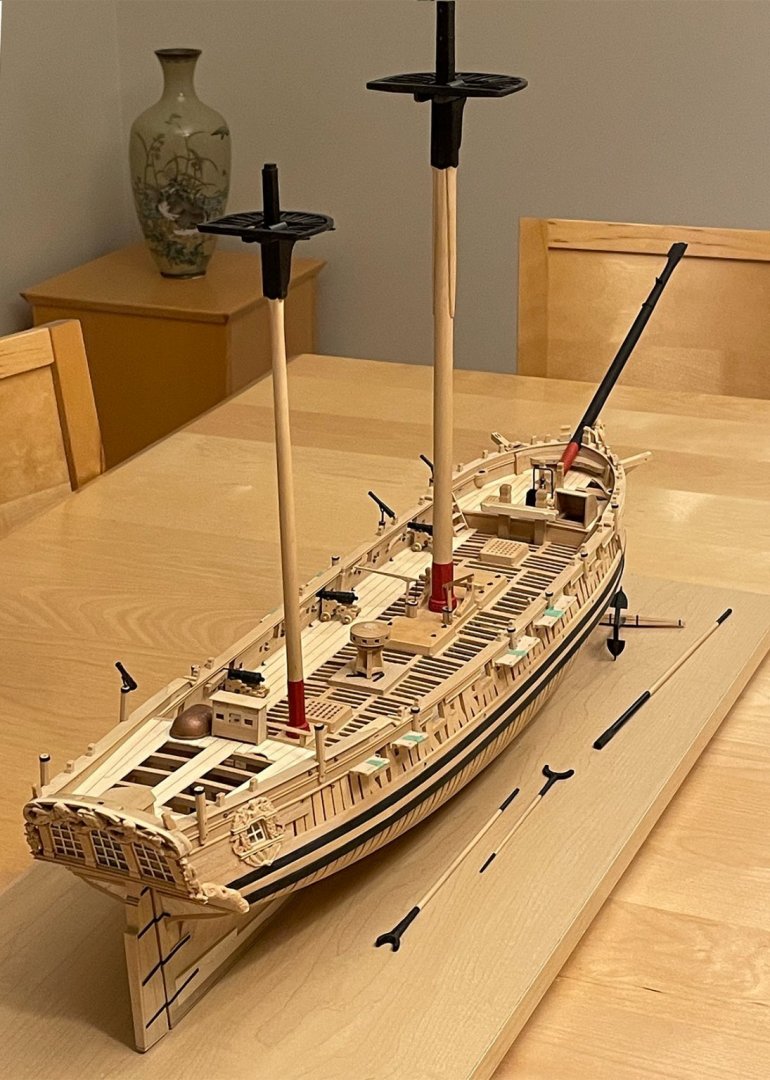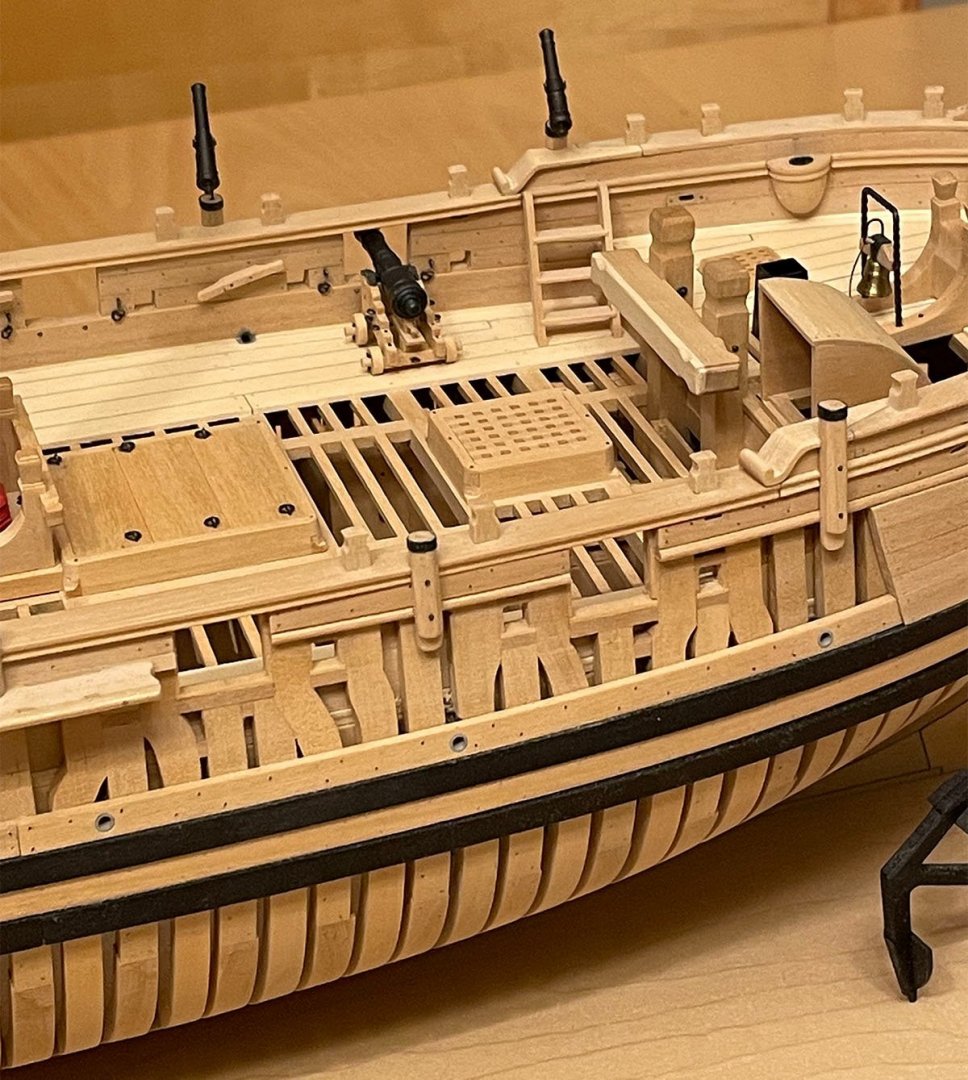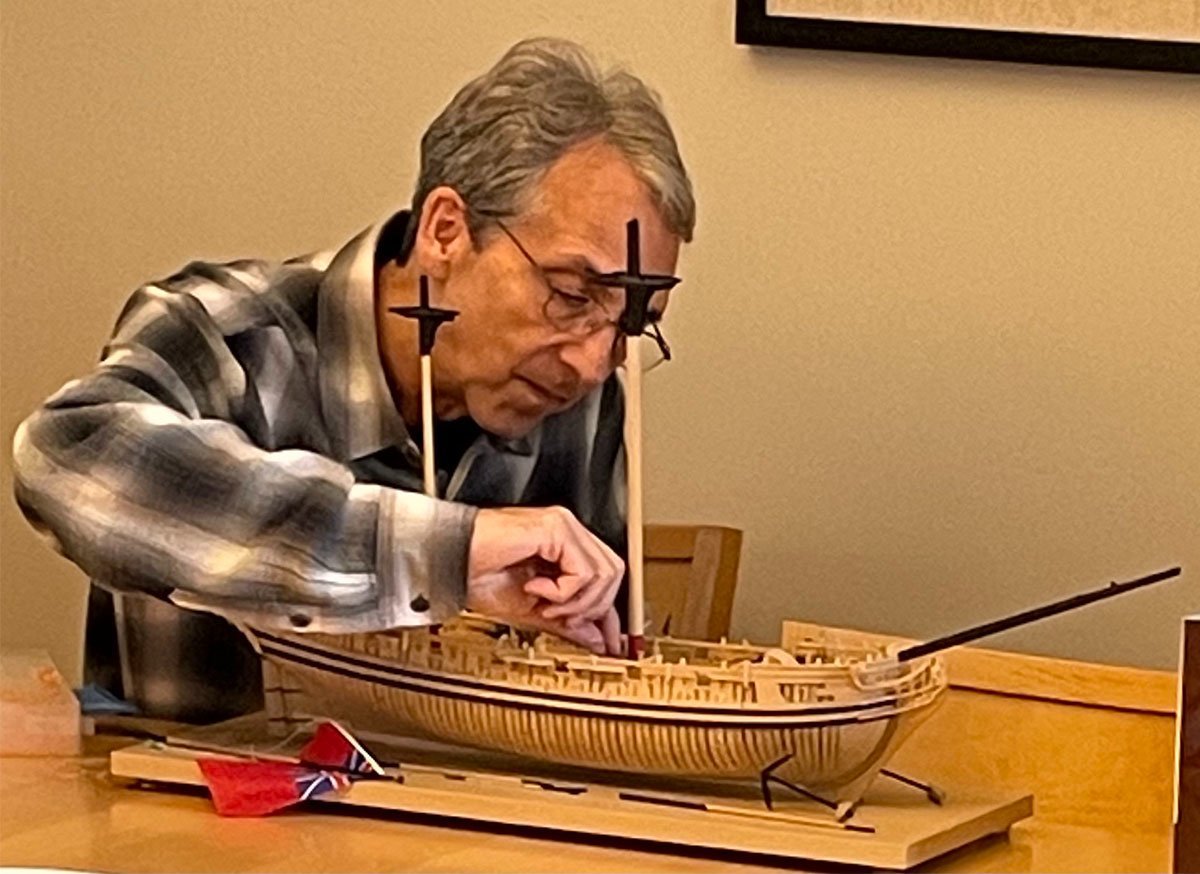-
Posts
13,353 -
Joined
-
Last visited
Content Type
Profiles
Forums
Gallery
Events
Everything posted by druxey
-
Finally, after a wait of almost three years, Greg Herbert was able to travel this weekend and retrieve Speedwell from David Antscherl's workshop. The model had been marooned in Canada due to covid after having the carved works made and fitted. Speedwell (she was temporarily re-christened Speednaught) is now heading back to Maryland with her rightful owner for rigging. The saga will continue soon.... Photos of the reunion are attached.
-
The gap is deliberately there so that water can drain through!
- 23 replies
-
- Lowell Grand Banks Dory
- Model Shipways
-
(and 1 more)
Tagged with:
-
Welcome aboard, Paul. Check out the Marine Modellers of Niagara in the 'clubs' section of MSW.
-

Where can I find metal wire?
druxey replied to flying_dutchman2's topic in Metal Work, Soldering and Metal Fittings
Might I recommend not using steel or iron wire - it may rust. Use either brass or copper wire. To get rid of shine, either lightly sand with fine (400 grit) paper or, better, use a coloring agent such as the Jax range of chemical colorants: https://jaxchemical.com/product-category/colorants/ -
What exactly are you trying to waterproof? Is this for a floating model hull, or just to prepare for painting a wood surface?
-
After all those spider band sketches you are still sane, Keith? That must have been quite a job figuring them out. Nice boots, BTW!
-
Coming along? It certainly is! Your castle structures are a triumph of patience over adversity.
-
Search: 'miniature left hand thread taps and dies' One result: https://www.etsy.com/ca/listing/204960886/14-tap-die-set-no-07mm-to-2mm-taps-and?gpla=1&gao=1&&utm_source=google&utm_medium=cpc&utm_campaign=shopping_ca_en_ca_b-craft_supplies_and_tools-other&utm_custom1=_k_CjwKCAjwk6-LBhBZEiwAOUUDpxEIaD5B28Q7qqb-p0gWEGwFt6zgynsLWc3OKAnMrgGdG1AHY9PXShoC6DEQAvD_BwE_k_&utm_content=go_319629165_19444327605_75295112325_aud-310388264614:pla-106551294035_c__204960886enca_367792477&utm_custom2=319629165&gclid=CjwKCAjwk6-LBhBZEiwAOUUDpxEIaD5B28Q7qqb-p0gWEGwFt6zgynsLWc3OKAnMrgGdG1AHY9PXShoC6DEQAvD_BwE Happy hunting!
-
Welcome aboard, Alex.
-
At this point you realize how amazingly complex wood engineering was back then. Looking good, Kevin!
- 1,129 replies
-
Off to a good start, Alex!
- 23 replies
-
- Lowell Grand Banks Dory
- Model Shipways
-
(and 1 more)
Tagged with:
-

Cheers from Port Hope, Ontario, Canada
druxey replied to Peter Rumgay's topic in New member Introductions
Welcome, Peter. Check out the Marine Modellers of Niagara on the 'clubs' section of MSW. -
Oh, I'm sure you'll do a nice job on the kit 'as is'. But you may feel you want to kit bash a different kit later on.... Just sayin'!
- 109 replies
-
- Finished
- Artesania Latina
-
(and 1 more)
Tagged with:
-
Life happens! We understand, You'll get back to it when you can.
- 8 replies
-
- Model Shipways
- Lowell Grand Banks Dory
-
(and 1 more)
Tagged with:
-
Your comments on the kit scale fitting out make me think you are on your way to either kit-bashing (modifying the model as you build it) or even scratch building!
- 109 replies
-
- Finished
- Artesania Latina
-
(and 1 more)
Tagged with:
About us
Modelshipworld - Advancing Ship Modeling through Research
SSL Secured
Your security is important for us so this Website is SSL-Secured
NRG Mailing Address
Nautical Research Guild
237 South Lincoln Street
Westmont IL, 60559-1917
Model Ship World ® and the MSW logo are Registered Trademarks, and belong to the Nautical Research Guild (United States Patent and Trademark Office: No. 6,929,264 & No. 6,929,274, registered Dec. 20, 2022)
Helpful Links
About the NRG
If you enjoy building ship models that are historically accurate as well as beautiful, then The Nautical Research Guild (NRG) is just right for you.
The Guild is a non-profit educational organization whose mission is to “Advance Ship Modeling Through Research”. We provide support to our members in their efforts to raise the quality of their model ships.
The Nautical Research Guild has published our world-renowned quarterly magazine, The Nautical Research Journal, since 1955. The pages of the Journal are full of articles by accomplished ship modelers who show you how they create those exquisite details on their models, and by maritime historians who show you the correct details to build. The Journal is available in both print and digital editions. Go to the NRG web site (www.thenrg.org) to download a complimentary digital copy of the Journal. The NRG also publishes plan sets, books and compilations of back issues of the Journal and the former Ships in Scale and Model Ship Builder magazines.










